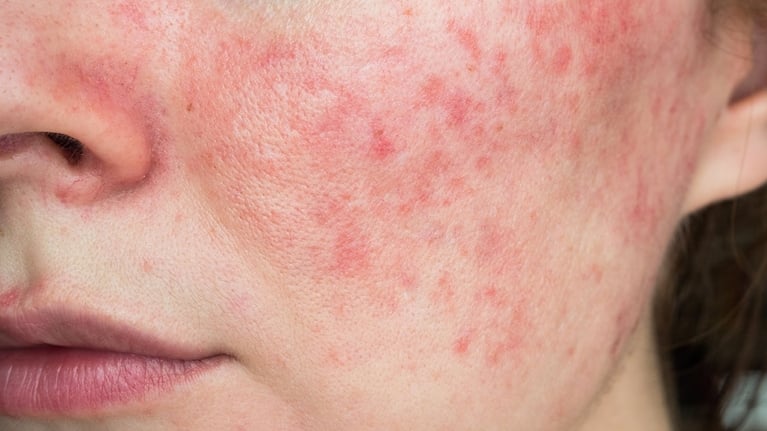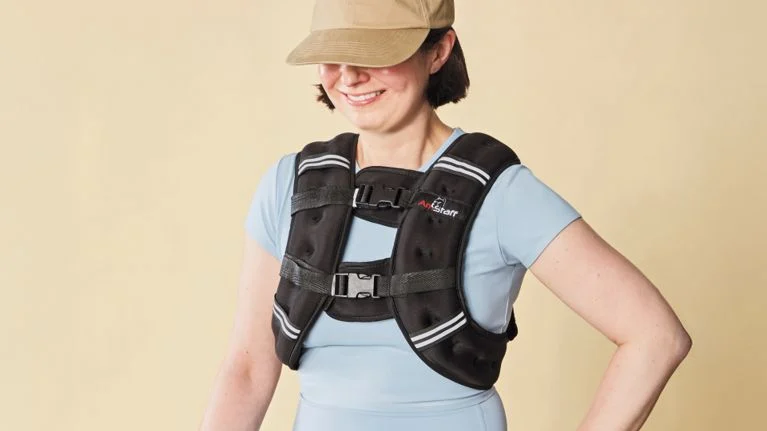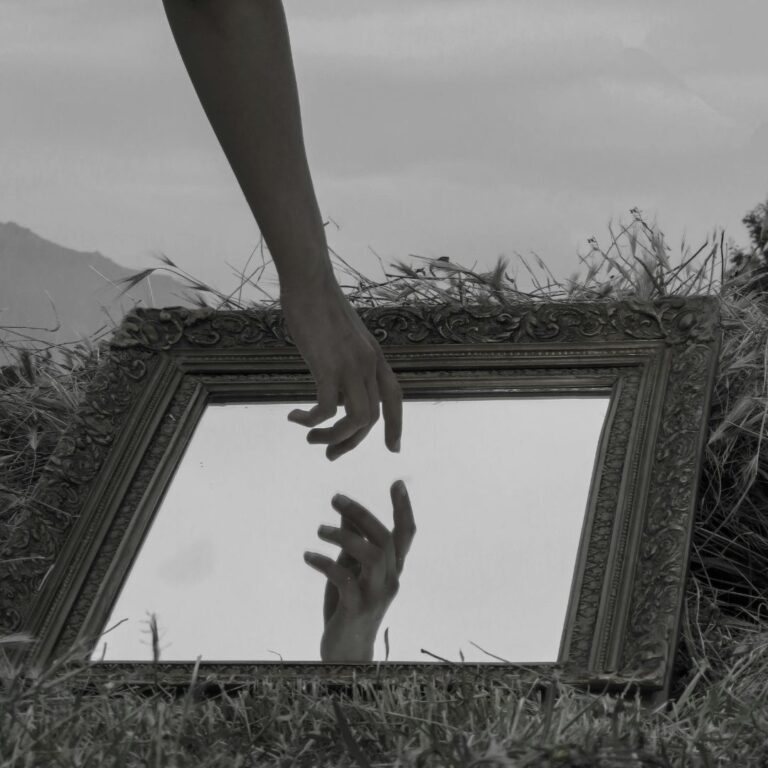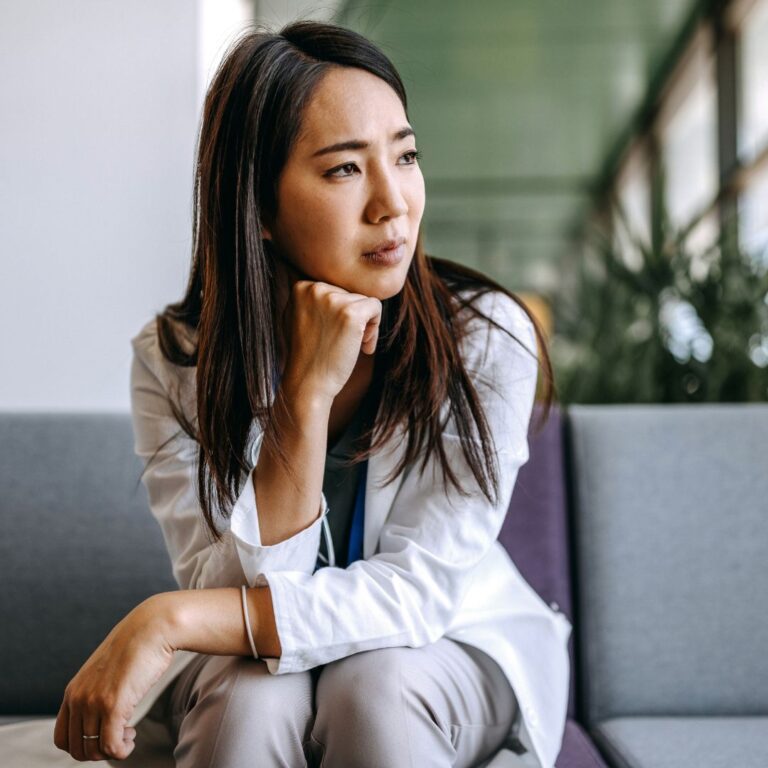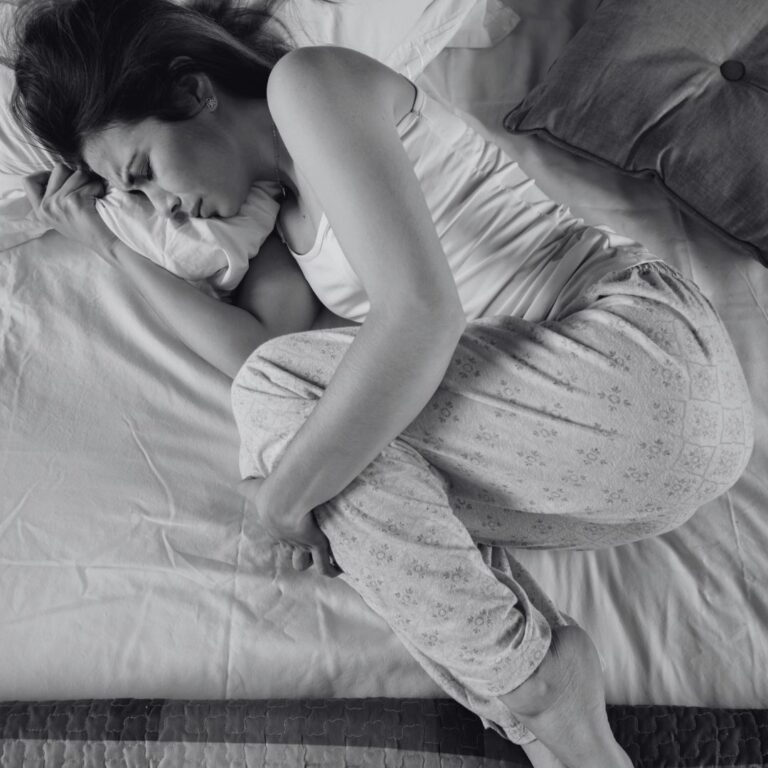Bone density scans: What they are and why you might need one
Health11.09.2024
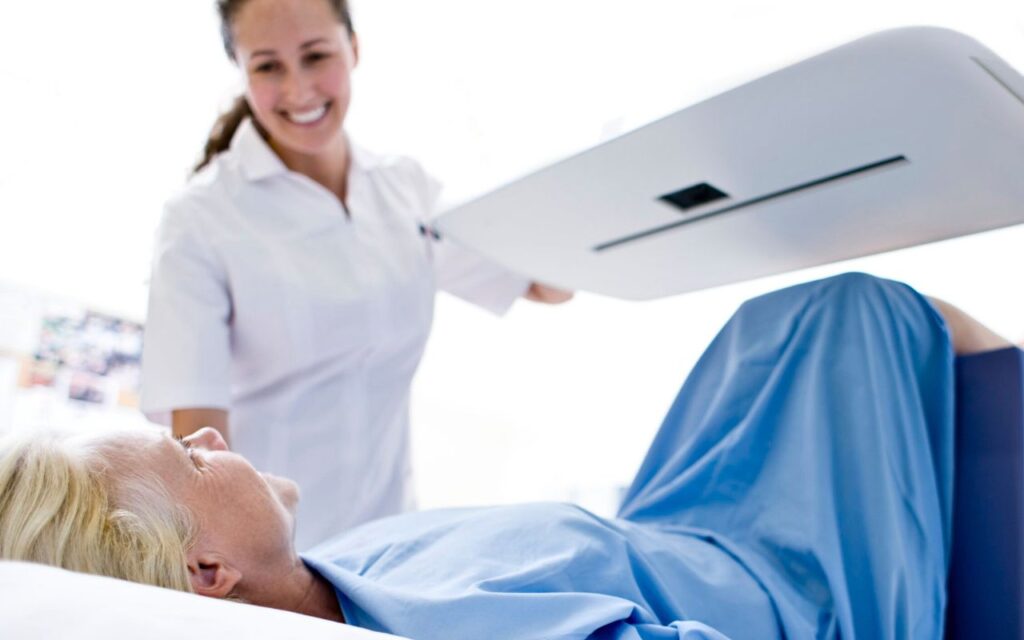
“I think you should have a bone density scan.” I was at a pelvic floor physiotherapy appointment, certainly not thinking about my bones, or their density, but my (very thorough) therapist had picked up on the anorexia that lurks in my medical history.
“What does the test involve?” I asked.
“I’m not 100 per cent sure,” she admitted. “But I think it’s worth considering.”
Sure enough, back at home, Google was quick to provide the information that about 30 per cent of people with anorexia develop osteoporosis.
While osteoporosis can affect men and women of all ages, white and Asian women — especially those past menopause — are at highest risk.
Here are some other reasons a healthcare professional might advise you to have a bone mineral density (BMD) scan — or why you might ask for one:
- Age: The risk of osteoporosis increases with age.
- Early menopause: Women who experience menopause before age 45 have a higher risk of osteoporosis due to a longer period without the protective effects of estrogen.
- Family history: A family history of osteoporosis or fractures can increase a woman’s risk.
- Fracture history: Women who have experienced fractures after minor falls or injuries may need a BMD scan to assess bone health.*
- Medical history: Conditions like rheumatoid arthritis, hyperthyroidism, and chronic kidney disease can affect bone density.
- Medications: Long-term use of corticosteroids and certain other medications can lead to decreased bone density.
- Lifestyle factors: Smoking, excessive alcohol consumption, and low body weight are risk factors for osteoporosis.
- Calcium or vitamin D deficiency: Inadequate intake or absorption of calcium and vitamin D can affect bone health.
- Previous low BMD results: If a previous BMD test showed low bone density, follow-up tests may be necessary to monitor changes over time.
(*Don’t miss our earlier story by Sarah Llewellin about the fractures which led to her diagnosis of osteopenia, a.k.a. brittle bones.)
As a menopausal white woman with a history of anorexia, I decided to ask my family doctor about having a scan.
“Sure,” he agreed as he clicked away on his keyboard. “We might as well get a baseline for you.”
“So, you’ll refer me?”
“Already done,” he said. “You’ll get a call from the imaging centre to set up an appointment.”
“Easy” was the best way to describe part one of the process.
Part two
About 10 days after the referral, I got a call from the imaging centre offering me an appointment in a few weeks’ time.
The emailed instructions warned me not to take calcium supplements on the day of my test — no problem, as I never take them — and instructed me to wear loose-fitting clothing without metal, including snaps, buttons, zippers, etc.
Apart from the fact that a surprising amount of clothing these days has metal, whether it be joggers with metal aglets on their drawstrings, or sports bras with metal rings and sliders, I was able to figure out a metal-free outfit and headed off for what I’d been told would be a 20-minute test.
While in the waiting room, I read up on how the BMD test works.
- Low-dose X-rays: The machine sends a very low dose of X-rays through your body and measures how much of the X-ray beam is absorbed by your bones. (How low-dose? The amount of radiation is comparable to the amount of natural background radiation you’d receive in a day or two from natural sources in the environment.)
- Density calculation: The amount of X-ray that gets absorbed by your bones helps the machine calculate the density of the minerals in your bones.
- Results: The scan results show how strong your bones are. Higher density means stronger bones, while lower density means weaker bones and a higher risk of fractures.
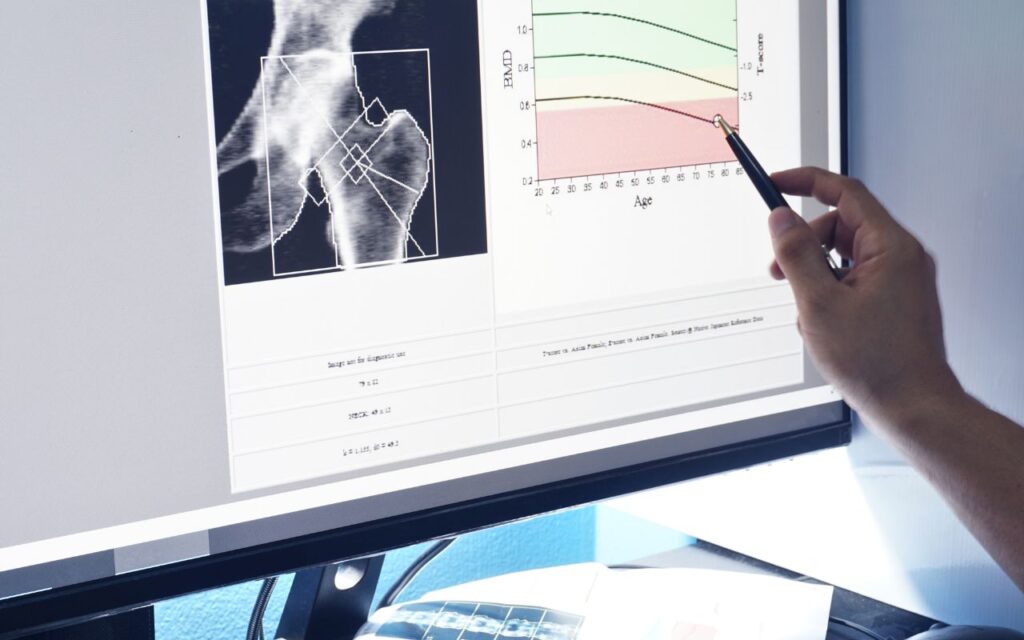
The results are calculated using both a T-score and a Z-score:
T-score
- What it is: Compares your bone density to that of a healthy young adult
- Normal: -1.0 or above
- Osteopenia: Between -1.0 and -2.5 (low bone density)
- Osteoporosis: -2.5 or below (very low bone density)
Z-score
- What it is: Compares your bone density to what’s typical for your age, sex, weight, and ethnic background
- A Z-score of -2.0 or lower might suggest other factors causing bone loss
Part three
My reading came to an end as I was called in for my test which truly was as quick and easy as advertised. I had it at the same clinic I go to for my mammograms, and I only wish mammograms were so simple.
A friendly technician took me into a room containing a large bed-like machine with a scanning component over top.
During the first part of the test, my legs were bent over a large bolster. The room was quiet, the bed was comfortable, my sometimes-weary legs were elevated … and all I had to do was lie there.
An X-ray scanner passed slowly over me, measuring the bone density in my hip and lower spine, which are the areas most likely to break because of osteoporosis (the lower spine bones and the narrow neck of the thigh bone, next to the hip joint).
Next, the technician removed the bolster, straightened my legs, and sent the scanner over for another pass.
And that was it.
She said a technician would analyze my scans, then send the results to my family doctor.

Results
Two days later I got a message from my doctor’s health portal: “Your bone density is normal.”
For me, this was a simple, positive experience. It gave me a baseline for my bone health, with very little effort or inconvenience.
Perhaps I’d feel differently if the results were different … or maybe I’d just be more grateful for catching a problem early on.
Conclusion
Of course, there are general steps you can do to help keep your bones strong and healthy. Humber River Health’s Bone Health Clinic offers a handy info sheet which you can access here, with the main tips being:
- Eat foods high in calcium
- Eat foods high in vitamin D
- Eat a balanced diet
- Limit sodium
- Limit caffeine
- Limit alcohol
- Don’t smoke
- Stay active
If any of the above information makes you think a BMD scan might be right for you, don’t hesitate to ask your doctor. And if your doctor thinks it’s a good idea, based on my experience, I’d recommend going for it.


